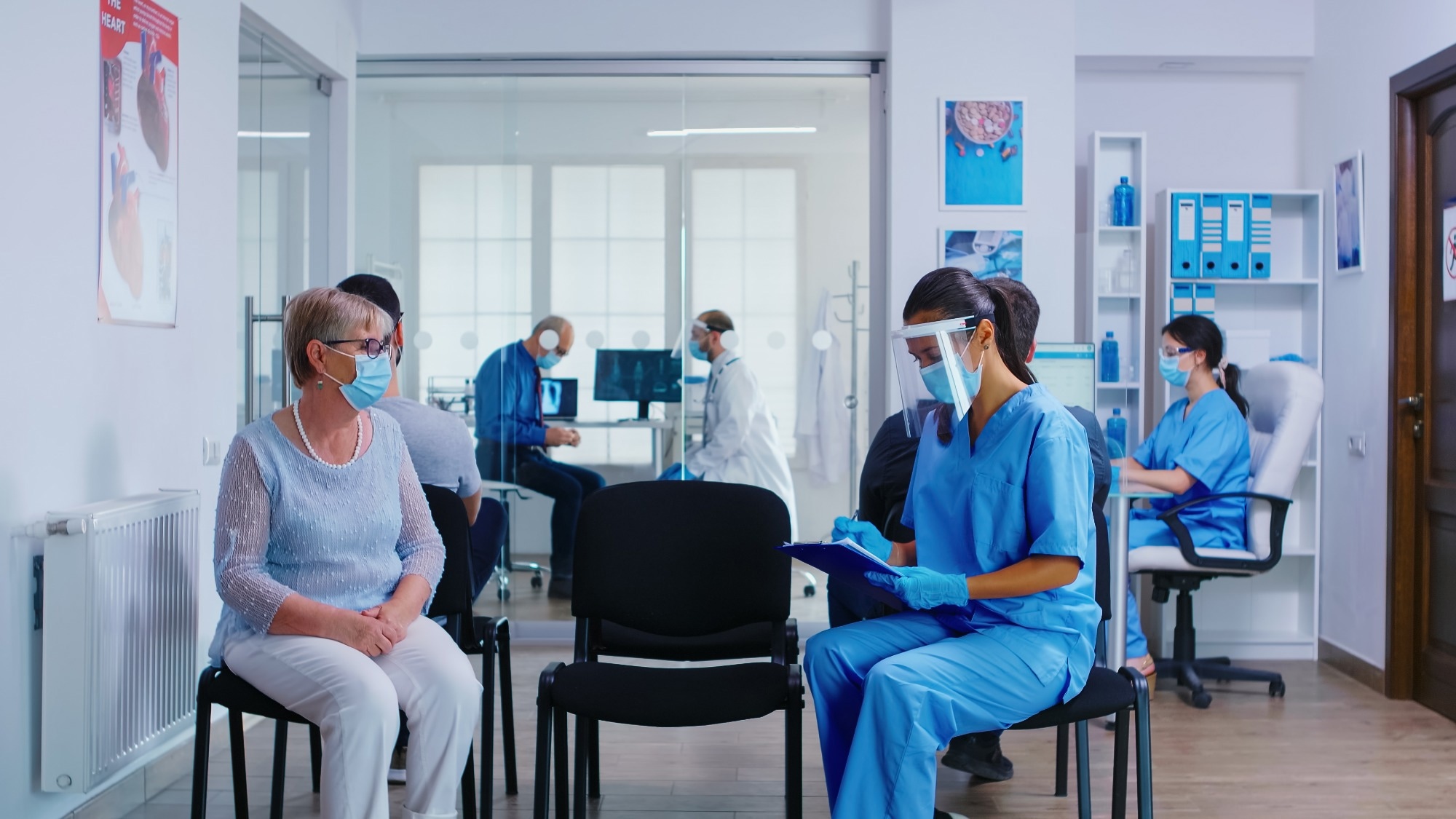Differences in immune responses to IL-6 inhibition therapy between male and female COVID-19 patients
In a recent study published in Scientific Reports, researchers investigated whether anti‑interleukin 6 (IL‑6) monoclonal antibodies were related to heterogenous treatment effects between male and female coronavirus disease 2019 (COVID-19) patients.

Background
The clinical course of COVID-19 is variable, ranging from mild symptoms to severe lung discomfort, acute respiratory distress syndrome (ARDS), or death. Greater COVID-19 severity and mortality have been reported among men than women. Thus, differences in immunological responses to severe acute respiratory syndrome coronavirus 2 (SARS-CoV-2) might underpin sex-based differences in COVID-19 outcomes.
The present study’s authors have previously reported higher inflammatory cytokine levels in men than women despite similar viral loads, age, the extent of hypoxemia at clinical presentation, and organ support requirements, indicating exaggerated immune responses in men. They also demonstrated that interleukin-6 levels strongly correlate with COVID-19 severity and associated mortality.
About the study
Building on their previous work, in the present retrospective cohort study, researchers determined the relationship between biological gender and interleukin-6 inhibition therapy on COVID-19 severity outcomes, such as disease progression to pulmonary failure and death.
The study included 1,274 individuals aged 18 years and older (median age of 64 years), among whom 58% were men, 44% were white, and 15% received anti-interleukin-6 antibodies. Regularly obtained clinical information was extracted from electronic medical records of hospitalized adults with polymerase chain reaction (PCR)-confirmed SARS-CoV-2 infection between March 1, 2020, and June 30, 2022.
In addition, individuals infected with SARS-CoV-2 during the initial COVID-19 wave until December 11, 2020 [i.e., until the SARS-CoV-2 Alpha variant of concern (VOC)-dominant period, based on the COVID-19 Genomics, United Kingdom (COG-UK) information] were included in the analysis if they required oxygen (O2) supplementation during their hospital stay.
Cox proportional hazards regression modeling was performed to calculate the hazard ratios (HRs), adjusting for age, steroid usage, ethnicity, C‑reactive protein (CRP) levels (as a surrogate for COVID-19 severity), and the causative SARS-CoV-2 variant.
Anti-interleukin-6 receptor monoclonal antibody therapy was administered to hospitalized COVID-19 patients with CRP levels above 75.0 mg/L and ICU-admitted COVID-19 patients requiring respiratory assistance (high-flow O2 treatment, mechanical ventilation, or non-invasive-type positive pressure ventilation) within a day of hospitalization.
The team avoided using anti-interleukin-6 receptor monoclonal antibodies for SARS-CoV-2-infected individuals with suspected or known bacterial infections, aspartate transaminase (AST) or alanine transaminase (ALT) levels more than five-fold higher than the normal limit, neutrophil counts below 2 × 109, or platelet counts below 50 × 109. The relationship between interleukin-6 inhibition therapy and CRP trajectory was assessed. Individuals who were deceased within 2 days of hospitalization (n=16) were excluded from the analysis.
Results and discussion
Of the 1,274 participants, 189 individuals received anti-interleukin-6 receptor monoclonal antibody treatment, including 73 (14%) female and 116 (16%) male COVID-19 patients. The Alpha VOC (41%) accounted for most cases, followed by the Wuhan-Hu-1 strain (32%), and the Delta VOC (21%). Baseline CRP and lymphocyte counts were 87 mg/L and 1 × 106/mL, respectively.
Among the participants, 23% received Remdesivir, two patients received a Janus kinase (JAK) inhibitor, and 188 anti-IL-6 receptor monoclonal antibody recipients also received steroids.
At hospitalization, 69% of individuals required oxygen supplementation alone, and only 6% required mechanical ventilation. The overall hospital mortality rate was 23%. A statistically significant association was observed between gender and anti‑interleukin-6 receptor antibody usage on progression to pulmonary failure or death. Among individuals who did not receive anti‑interleukin 6 receptor antibody treatment, mortality risk was marginally higher among males (HR, 1.6), whereas among anti‑IL‑6 receptor antibody recipients, the risk was lower among males (HR, 0.9).
Likewise, among individuals who did not receive IL-6 inhibition treatment, male COVID-19 patients were at an increased risk of pulmonary failure or mortality than female patients (HR, 1.1). Contrastingly, among IL-6 inhibitor recipients, male patients showed a lower risk of pulmonary respiratory failure and death than their female counterparts (HR, 0.7).
IL-6 inhibition therapy was linked to a larger reduction in serological CRP levels with time compared to no IL-6 inhibition therapy. The team observed heterogeneous effects with anti‑interleukin 6 antibody treatment between females and males, with interleukin-6 inhibition therapy conferring a greater advantage in preventing disease progression to pulmonary failure or death among men.
Multiple genes associated with immune functions are situated on the X chromosome; therefore, X-linked mosaicism confers a highly polymorphic genetic expression, which enables females to respond with a more expanded immunological repertoire than men.
In addition to higher pro-inflammatory cytokines, males have greater expression of viral entry factors, such as angiotensin-converting enzyme 2 (ACE2), as well as accessory proteases, cathepsin L (CTSL), and transmembrane protease serine 2 (TMPRSS2) in alveolar type 2 and airway secretory cells. Additionally, males have demonstrated poor T lymphocyte responses, which are linked to worse clinical outcomes.
Overall, the study findings showed that interleukin-6 inhibition therapy results in heterogeneous immunological responses between female and male COVID-19 patients. There was a statistically significant interaction between IL-6 inhibition therapy use and disease progression to pulmonary failure or death, with males having a greater advantage associated with therapy use.
The findings indicated that the inclusion of gender as a research parameter could promote the identification of COVID-19 pathophysiological mechanisms and aid in developing targeted treatments.
- Stein DF, Foley C, Byott M, et al. (2023). Biological sex is associated with heterogeneous responses to IL-6 receptor inhibitor treatment in COVID-19—A retrospective cohort study. Scientific Reports. 13, 13504. doi:10.1038/s41598-023-40744-y. https://www.nature.com/articles/s41598-023-40744-y
Posted in: Medical Science News | Medical Research News | Disease/Infection News
Tags: ACE2, Acute Respiratory Distress Syndrome, Alanine, Angiotensin, Angiotensin-Converting Enzyme 2, Antibodies, Antibody, Chromosome, Coronavirus, covid-19, Cytokine, Cytokines, Electronic Medical Records, Enzyme, Genes, Genetic, Genomics, Hospital, Hypoxemia, Interleukin, Interleukin-6, Kinase, Lymphocyte, Monoclonal Antibody, Mortality, Oxygen, Platelet, Polymerase, Polymerase Chain Reaction, Protein, Receptor, Remdesivir, Research, Respiratory, SARS, SARS-CoV-2, Serine, Severe Acute Respiratory, Severe Acute Respiratory Syndrome, Steroid, Syndrome, T Lymphocyte, X chromosome, X-linked

Written by
Pooja Toshniwal Paharia
Dr. based clinical-radiological diagnosis and management of oral lesions and conditions and associated maxillofacial disorders.